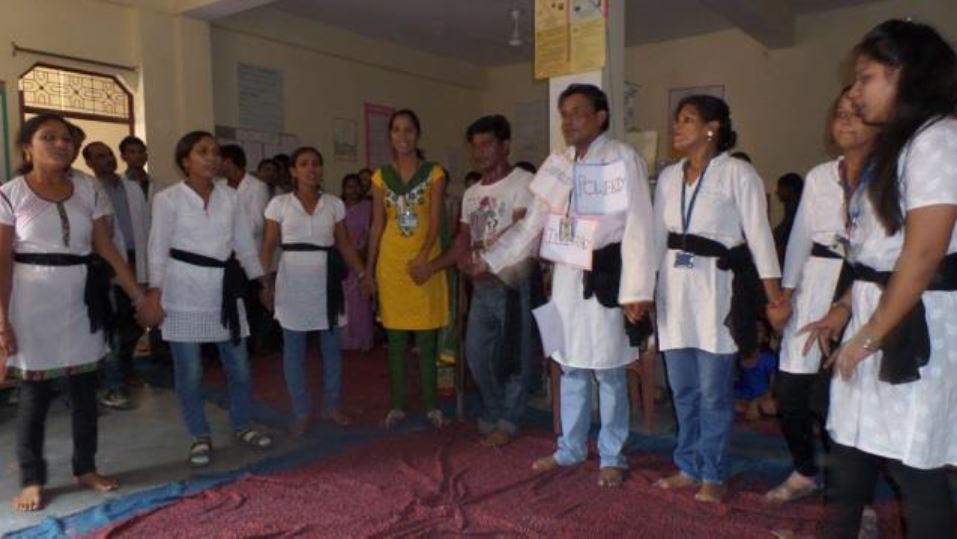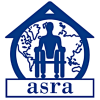Besuchsbericht von Tina Zimmerli
Barbara und Marco Rancan:
Ein Besuch bei der ASRA-Familie in Delhi
Im vergangenen Jahr hatte ich einen Schul-Urlaub und plante zusammen mit meinem Mann eine Indienreise. Sie führte uns auch nach Delhi.
Fünf Tage verbrachten wir insgesamt in Delhi, grossenteils bei ASRA. Dort empfing uns Vandana Mishra auf Herzlichste und führte uns in allen Abteilungen und Sektionen trotz eines bestehenden Feiertags (Republic Day) herum und stellte uns ihre Mitarbeiter vor.
Beim ersten Besuch war ich noch alleine und Ramdji stand mir als treuer Fahrer für einen ganzen Tag zur Verfügung. Im Asra-Gebäude gab es zuerst einen lieben Empfang mit Ankana, Vandanas Stellvertreterin. Ich durfte alle Klassen besuchen mit meinem schönen Blumenkranz um den Hals. Es ging vor allem um Computerkurse, einen Schneider- und Beautykurs, ich sah auch das Zimmer mit den Physiotherapeuten, die Ergotherapie sowie die Werkstatt, wo Prothesen-Rohlinge für Kinder ausgearbeitet und angepasst werden. Ich wurde ausserdem eingeführt in das Archiv und sah, wie Lebensläufe exakt medizinisch aufgezeichnet und weiterverfolgt werden. Das System ist eindrücklich, wie vorgegangen wird, wenn ein behindertes Kind beschrieben wird und wie es zu seinem Behinderten-Ausweis am Schluss kommt. Das ist ein hartes Stück Arbeit und dauert oft Monate oder noch länger.
Zur Zeit wird in 50 verschiedenen Slumgebieten – Communities genannt – gearbeitet. Besonders eindrücklich ist, wie Fachleute hier vor Ort vorgehen. Da sah ich auch einen Raum für eine Computergruppe, dann behinderte Kinder mit ihrem Speziallehrer und einen Sprachtherapeuten an der Arbeit. Es ist schon eine tolle Leistung auf kleinsten Platzverhältnissen so vielen behinderten oder auch armen Kindern, welche gar nie eine Chance für eine Schulbildung hatten, einen kleinen Rucksack fürs Leben zu schnüren. Gewisse Räume werden bewusst für verschiedene Schulgruppen hintereinander ausgelastet. Das bedeutet einen sehr knappen Stundenplan z.B. 9-12 Uhr Schule, 12-15 Uhr Computerschule, 15-17 Uhr Schneiderkurs etc, wobei das Schneidern auf dem Boden mit handgetriebenen Maschinen (Fussbetriebene hätten gar keinen Platz) auch gelernt sein will. Einen Lehrer sah ich an zwei Orten, Lehrer und Therapeuten arbeiten oftmals mehrschichtig, z.B. 2 Stunden an einem, dann weitere 2 Stunden am nächsten Ort.
Die Schüler erschienen mir alle topmotiviert, dankbar, dass sie etwas lernen durften, stolz, dass sich jemand für sie und ihre Arbeit interessierte. In einer kleinen Slumschule sagten alle Kinder einzeln einen Spruch auf in Englisch oder sangen etwas vor, sogar der kleinste Dreikäsehoch stand schüchtern ganz vorne. Ich war tief berührt ob diesem Eifer und dachte an meine oft verwöhnten Schüler zuhause mit eigenen Pulten, schönen Heften, wunderbaren Etuis und immer neuesten Materialien…
Wenn jetzt eine Fee käme und ich einen Wunsch frei hätte, so würde ich mir für alle diese Kinder einen schönen Beruf aussuchen, der sie und ihre späteren Familien glücklich machen würde.
Meinem Mann Marco und mir hat es in Indien und speziell bei ASRA sehr gut gefallen und es war eine eindrückliche Erfahrung ASRA, für das wir so gerne spenden, einmal „life“ zu erleben. Wir hoffen irgendwann diese Reise wiederholen zu können und zu dürfen.
Barbara Rancan
Romolo D. Honegger: ASRA re-visited in 2014
Prelog
During 2001 I was encouraged by my friend M.U. to accompany him on a trip to Indie. In particular he wanted to introduce me to ASRA (acronym for “Action for self-reliance and alternatives), a charity, non-profit voluntary organization, whose objective is to serve the cause of persons with disabilities living in the slums and resettlement colonies of Delhi. After having visited some of the slums and observed the very simple, if not to say primitive, installations where disabled children and adults were examined and given a chance to get a formal and non-formal education, I was very much impressed and decided to join ASRA Switzerland, which financially supports ASRA Delhi.
As Chairman of the (Swiss) advisory board I visited Delhi again during November 2004, and on November 2008 (when I had attended the ceremony of the laying stone of the ASRA rehabilitation center). In all these years I have raised funds among my friends in Switzerland and abroad to help to support the valiant objectives of ASRA.
The reason why
From time to time my sponsors have enquired whether I can assure them that the funds are properly used. Although ASRA Switzerland applies a strong external control and supervision, only occasional in situ visits from members of the Stiftungsrat can guarantee that this is so. I also consider it my personal duty to report to my sponsors that their funds are dutifully and economically used. That is the reason why, since some time, I have contemplated to re-visit ASRA in Delhi. There is also another personal reason; I have engaged myself for this charitable institution for the last 12 years, and now – having reached the age of 80 – I would like to wind up my engagement with a final trip.
A start with unpleasant surprises
Not so long ago I was informed by Mr. Jakob Schmid, the President of ASRA Switzerland, that he also intends to pay a one-week visit to ASRA Delhi in order to review the budget for 2014/15 and discuss common topics with members of the Delhi Board of Trustees, visit government agencies and to get a personal insight into the daily operations. Without hesitation I told him that I would like to accompany him on this trip.
10 days before departure, Jakob Schmid told me that he has to cancel his trip, due to pneumonia. That was the first unpleasant surprise. Knowing only too well that the staff and beneficiaries of ASRA Delhi had undoubtedly prepared a great welcome party for the Swiss delegation and would be very much disappointed from a “no-show”, I felt obliged to go alone. Therefor I visited Jakob Schmid in his home in order to get instructions on technical details and also to bag the 5 kg of chocolates (I had also bought the same quantity) which he had purchased as a present to the staff and children.
Unfortunately, there was a second unpleasant surprise: 3 days before my departure, I suddenly had severe pains in my left knee and could hardly walk. Must I also cancel my trip? I could not bring it over my heart to totally disappoint our people in Delhi> I went to my doctor, who prescribed a very strong painkiller and advised me to use 2 crutches.
As a result, I went on my trip to Delhi alone, burdened with 10 kg of chocolate and encumbered by 2 crutches, not really what I had expected to do. ….. .
Visiting Delhi and ASRA
Entering Delhi is akin to entering a new, and very different, world. Unfortunately, I do not have time to convey all the strong impressions this exuberant, and yet at the same time very controversial, city leaves with a visitor who comes from the orderly and immaculate Switzerland. Traffic conditions are suicidality chaotic, and the conditions of the non-highway-roads are very rough. Poverty is omnipresent along the roads and the villages and towns.
I was royally greeted – as I had surmised – at the ASRA rehabilitation center with flowers, was garlanded by children, welcomed by Ms. Vandana Mishra (the founder and President of ASRA), had to light the traditional lamp and joined the prayer by the staff. Next on the program was the visit to various communities (the euphemism for slum). When I first visited ASRA, they were covering 4 communities, now they service 54 (out of a total of over 1000). In each of the community’s medical facilities, counseling service, non-formal education for children who have never gone (and without this assistance probably never would) go to school, handicraft education and – for mentally retarded children – special education programs are offered. To witness the ongoing flow of handicapped children, presented by their mothers, is a touching experience. On the other hand, the sight of 30 tiny children, sitting in a very small room and holding paper and pencil in their hands and smiling at the intruder, is an unforgettable experience.
ASRA has become an impressive operation, as illustrated by the “Organization Chart of Activities” Presently there are 91 staff members, all of them working with devotion and an amazing motivation. I have visited all centers, talked to the responsible head and thus gained a good insight into what they do and how they do it. On one of the days each unit head proudly showed me the meticulously kept records of their unit: In one folder the names and all relevant personal details of the beneficiaries are recorded. In the next folder the daily attendance is carefully registered, and in the third folder the set objectives are written down and commented on a weekly, monthly and semi-annual basis. The staff is still very young, as can be seen by the group-picture attached. I was highly impressed – and towards the end admittedly also somewhat exhausted – by the presentation. The diploma distribution for the successful completion of 20 computer, 9 tailoring and 6 beauty culture courses was a highlight – both for the recipients and for me as well.
I spent many hours in interviews with Trustees and members of the Advisory Board. Ms. Mishra and I also were received by the Director of Cooperation of the SDC in the Swiss Embassy, where we could portray and describe the ASRA operations and its goals and ambitions.
Last, but not, least, I had the opportunity to visit some of the architectonical and cultural highlight of the town. Driving there was however indeed a nerve-wracking experience.
The last day was reserved for a lengthy and copious farewell program. Children – both physically and mentally handicapped – were performing dances, there were two dance performances by students from the Institute for Physically Handicapped and there were the compulsory speeches. I had the last chance to get rid of my 10 kg of chocolates, and – in turn – received many gifts for myself and Jakob Schmid. As my personal gift to ASRA, I left my crutches, since my knee had substantially improved …
Conclusion
ASRA is a medium sized, but highly successful NGO, run professionally and with high motivation by devoted staff members. Over the 20 years of its existence many poor and destitute citizens of the slum areas have profited by its services and programs. Although its operations are only the proverbial “drop-on-a-hot-stone” (there must be millions who should also need help and assistance), for those who have and will profit, it means and gives “self-reliance and alternatives”. Therefor I am convinced that the money is wisely and profitably spent, in accordance with the wish of all those who have contributed to donate.
Pfr. Christian Hörler, Kliniken Valens:
Auszug über den Besuch von ASRA Delhi im Oktober 2013
Indien ist ähnlich wie Nepal, aber anders. Eine dicke Smogschicht hängt über Delhi mit seinen 15 Millionen Einwohnern. Ein ganzer Tag ist reserviert für ASRA. Vier Verantwortliche holen uns im Hotel ab und per Metro geht’s zum Hauptquartier im Westen der Stadt, wo wir freundlichst als Schweizer Delegation mit Blumen empfangen werden. Die Empfangsdame im Rollstuhl beräuchert die Ankömmlinge.
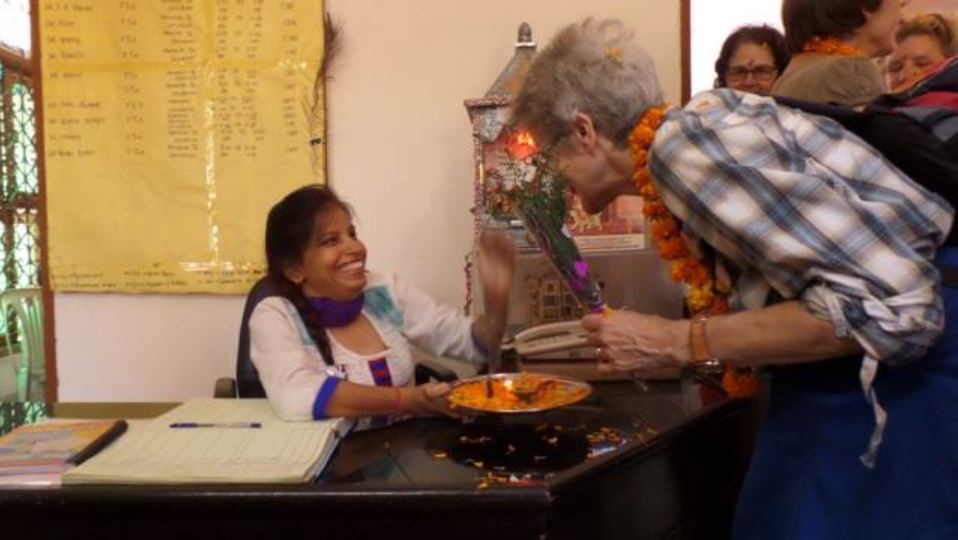
Wir werden durch die Räume mit den verschiedenen Angeboten durchgeschleust: Rehabilitation, Prothesenwerkstatt, medizinische Abklärung, Logopädie, Fashion-Design, Tailoring, Handarbeit, Beautysalon, Computerschule und schliesslich das Hauptbüro mit der Buchhaltung.
Just auf dieses Datum hat ASRA die Diplomübergabe organisiert, so dass jeder von uns einem Absolventen / einer Absolventin das Diplom übergab.
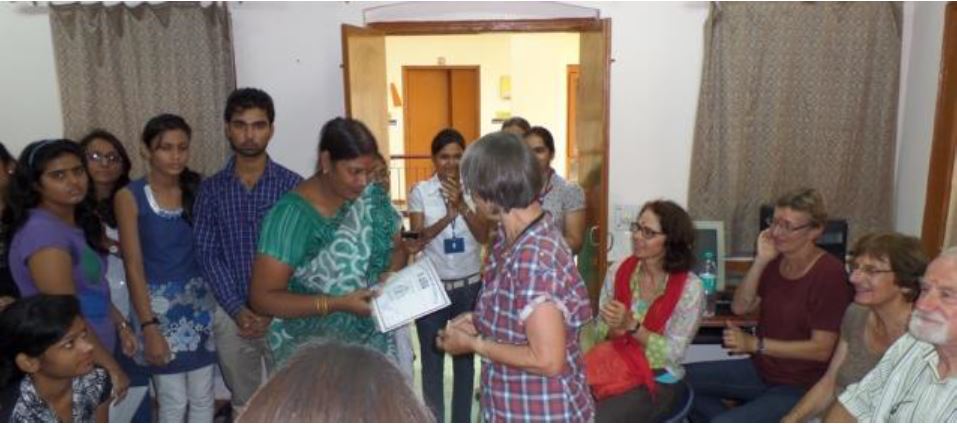
ASRA steht für “Action for Self Reliance and Alternatives”, das Angebot richtet sich an benachteiligte und behinderte Kinder und Jugendliche in den Slums von Delhi. Es gibt in Delhi zahlreiche Slums, von denen z.Z. etwa 50 von ASRA betreut werden. In den Slum Pooth Kalan (20‘000 Bewohner) sind wir gefahren und haben dort Projekte besichtigt. Ein gemietetes Schulzimmer, keine 20 qm, in dem Kinder eine Bildungschance bekommen.
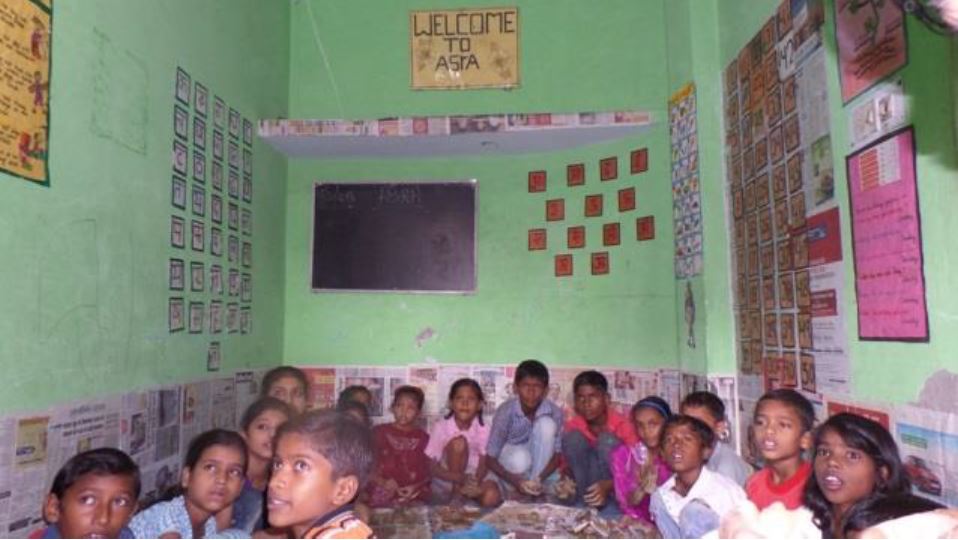
Auch Handarbeit, Nähen und Beauty ist ein Runer bei Mädchen. Hier vor dem Unterrichtsraum mit Slumkindern und der Gründerin und Präsidentin von ASRA, der Inderin Vandana Mishra (links).
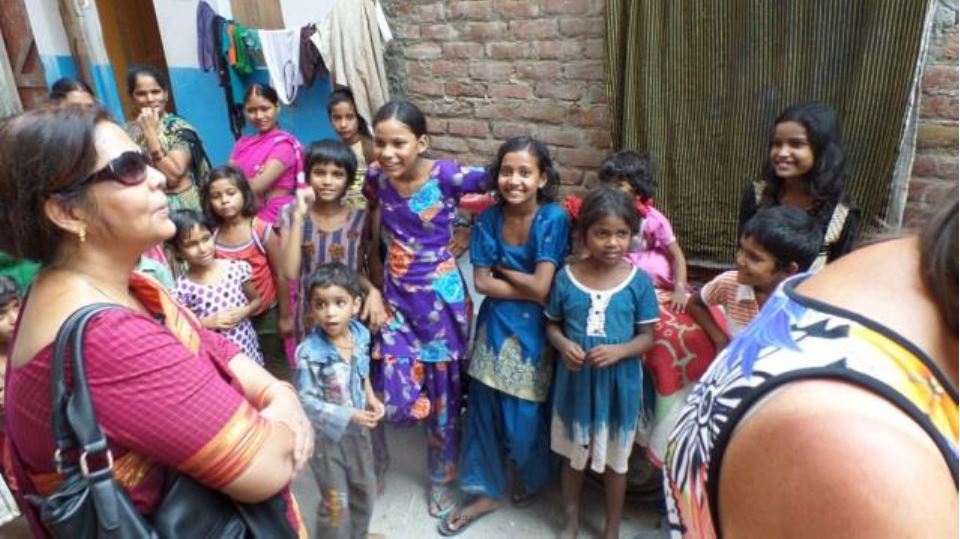
Ein feines Essen, verschiedene Darbietungen, hier von Ärzten und Therapeutinnen, runden unseren Besuch ab. Müde und erschöpft kehren wir per Metro zurück ins Zentrum von Delhi in unser Hotel mit Klimaanlage.Indien hat eine immense Kluft zwischen wenigen sehr Reichen und der Hälfte der Bevölkerung, die nach Angaben der Weltbank nicht mal 1 Fr. pro Tag zur Verfügung hat. Indien wächst zu einer Wirtschaftsmacht, doch lebt der grosse Teil der Bevölkerung in Armut und Elend. Nach wie vor werden Kinder zu unmenschlichen Bedingungen in Textilfabriken zu Arbeit gezwungen und werden wie Sklaven gehalten. Korruption ist an der Tagesordnung und erstickt so manchen Wunsch nach Verbesserung der Zustände.
